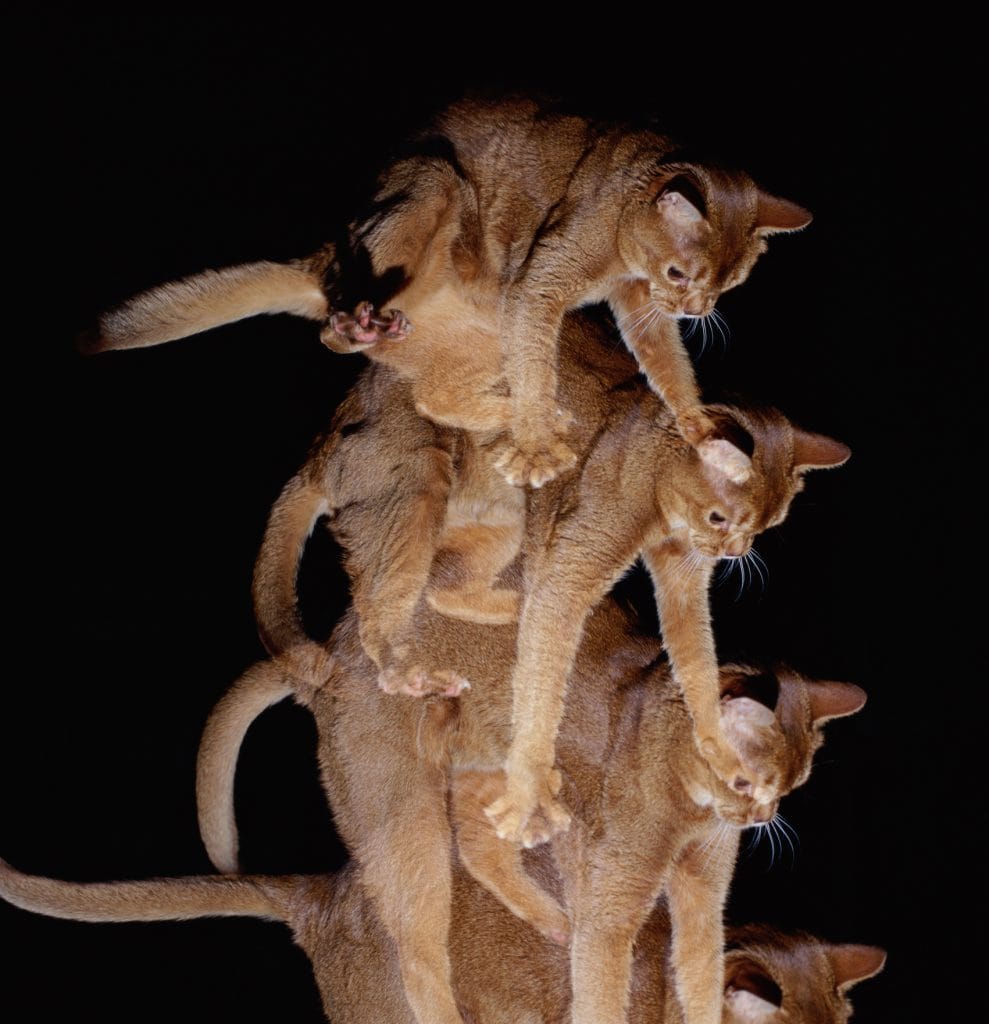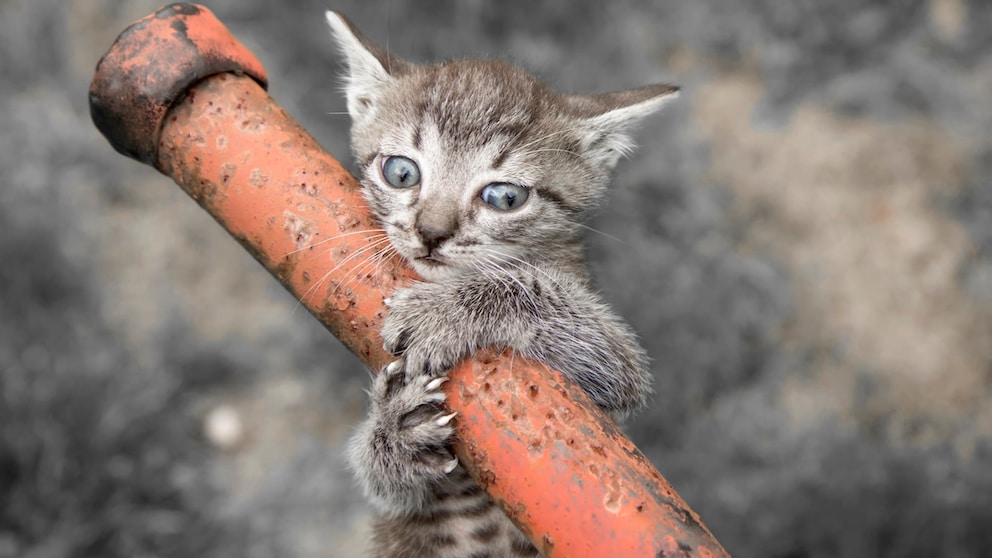April 22, 2025, 9:07 am | Read time: 6 minutes
Cats, according to popular belief, always land on their feet—even when they fall from a great height. But is this really true? And if so, why are cats often able to land on all fours after a fall? PETBOOK explains the truth behind this myth.
Every cat lover is familiar with the spectacular images of a cat twisting in mid-air during a fall from a great height. This usually allows them to land on all fours rather than on their back or side. This ability is known as the righting reflex or rotation reflex, explains Carmen Schell, an animal psychologist and expert in cat behavior from Dieburg in Hesse. When a healthy cat falls, an automatic process occurs within fractions of a second that the cat does not actively control. But do cats really always land on their feet when they fall?
Overview
How the Righting Reflex Works to Land Cats on Their Feet
In the righting reflex, the cat first turns its head and front body and then its hindquarters using its tail and paws toward the ground. The tail acts as a kind of balancing rod and also slows the animal’s fall speed. Additionally, the cat extends its legs, increasing its body surface area, which results in greater air resistance and further reduces fall speed. When landing, the cat arches its back, making a cat hump, to cushion a hard landing. Its keen sense of balance helps the cat quickly realize when it is falling headfirst.

The cat’s righting reflex ensures that the animals rotate during a fall to land on their paws
Do Cats Need to Practice Rotating After a Fall?
The term reflex already suggests it: The ability to rotate in the air—the righting reflex—is innate in cats and does not need to be learned. The animal cannot consciously control the rotation. Instead, the righting reflex is determined by the cat’s highly developed sense of balance.
This is due to the so-called vestibular organ in the cat’s inner ear. It consists—simplified—of three semicircular canals, also called labyrinth, filled with fluid. This structure functions like a spiritual level and signals to the animal the position of its head and body relative to the ground. The system responds—similar to humans—to gravity. During a fall, it ensures that the cat can orient itself and land on all fours. “However, the righting reflex in a newborn kitten develops only after about three to four weeks, roughly when the animal learns to walk in a controlled manner,” explains cat expert Carmen Schell.
What Height Do Cats Need for the Righting Reflex to Work?
To rotate in the air and truly land safely on their paws, cats need a certain minimum fall height, as Carmen Schell, an expert in cat behavior, explains. “It should be about two meters.”
Otherwise, there is a risk that the animal does not have enough time to rotate in free fall. Then the cat might land on its back or side and cannot properly cushion the fall. Only if there is a certain minimum height and thus enough time to rotate can the previously described sequence occur within fractions of a second during a fall: First, the cat turns its head and upper body, then its hindquarters, to finally land on its paws.
So Cats Don’t Always Land on Their Feet?
“Often, but not always,” says cat therapist Carmen Schell. “It depends, among other things, on the height from which the animal falls.” Age, weight, and health condition of the cat also play a role. Animals without a tail—such as those who have had it amputated after an accident or cats of the Manx breed, which is banned in Germany as a harmful breeding practice and are bred without a tail—often have difficulty landing safely on all fours. Although tailless cats can land on their paws when jumping or falling, they lack the tail as a steering element and to slow the fall. While cats usually land softly and quietly, tailless cats land more clumsily and harder on the ground. Carmen Schell, a behavior therapist for cats, describes it onomatopoeically: “The landing of a tailless cat sounds more like ‘thud’ rather than ‘fluff.'”
Can Cats Survive Falls from Great Heights?
The righting reflex does not mean that a cat can survive falls from the highest heights unscathed, emphasizes animal psychologist Carmen Schell. “From the third floor, it can already become critical.” Although there are cases known where cats survive falls from higher floors, the cat has enough time to rotate in the air and prepare for landing. “However, one should not rely on this,” warns the cat expert.
Often, a fall from medium or even great heights does not end well. Even if an animal has enough time to rotate, the cat’s paws and body can only cushion a certain fall weight. The fall speed plays a role, as does the cat’s own weight. “This means that a cat, even if it lands on its paws, can still hit its head due to fall height and weight and possibly break its jaw,” says cat expert Schell.
The animal can also break numerous other bones, such as in the legs. Internal injuries and bleeding, which are not immediately apparent, are also possible. “That’s why cats that have fallen from even a lower height from a window or balcony should always be taken to the vet immediately,” says Schell. “Even if the animal appears uninjured externally.” Cats are also masters at hiding injuries and illnesses. In the worst case, cat owners might only notice that something is wrong with their pet when it might already be too late.

Are cats allowed to eat watermelons?

How high can cats jump?

The 8 slowest animals in the world
Conclusion
Cats often land on their paws, but not always. Key factors are the cat’s health, weight, and fall height. Cats without tails also have trouble cushioning a fall and landing on all fours. To protect cats from falls, balconies should be secured with special cat nets. Additionally, cats should not sit at open, unsecured windows. Many animals have fallen while trying to catch a bird. Nets can help here too. For tilted windows, there are special grids that prevent an animal from squeezing through the gap and getting injured or falling. Very important: After a fall, the cat should be examined by a vet, even if no injuries are visible!

